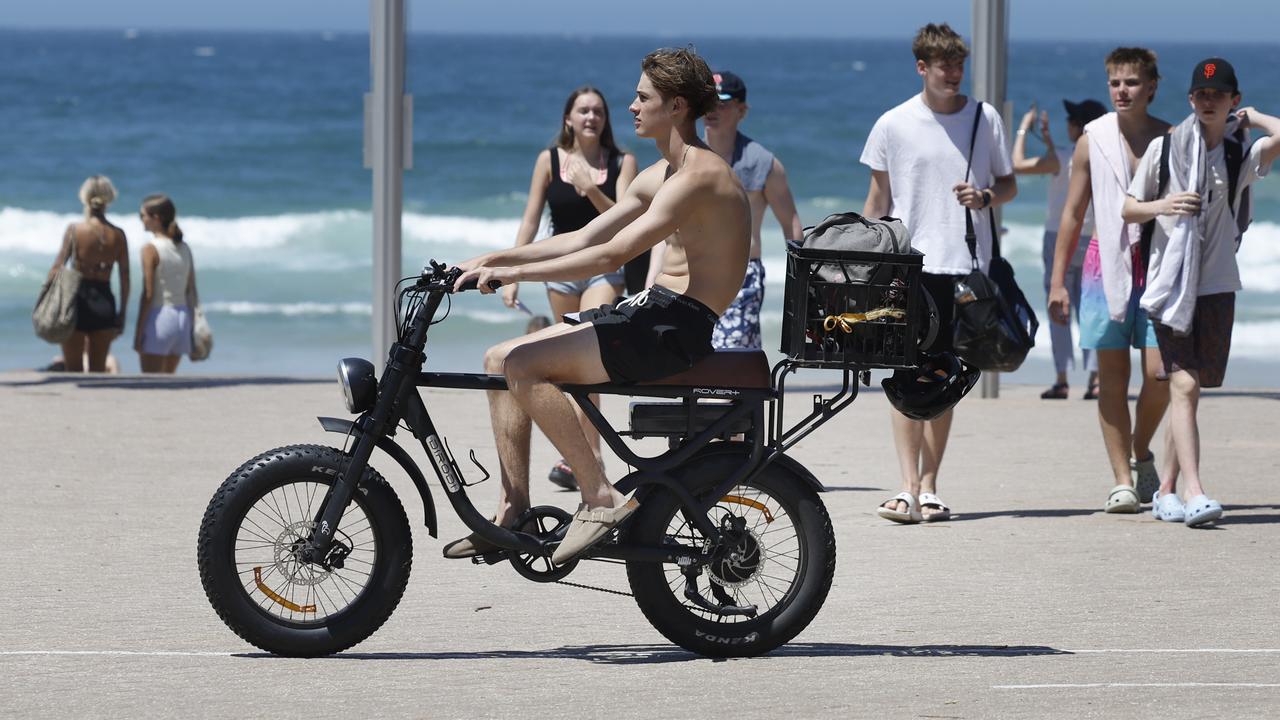Why Aussies are wrong about Nascar
A behind the scenes look at American stock car racing reveals there are plenty of lessons to be learned in motorsport.
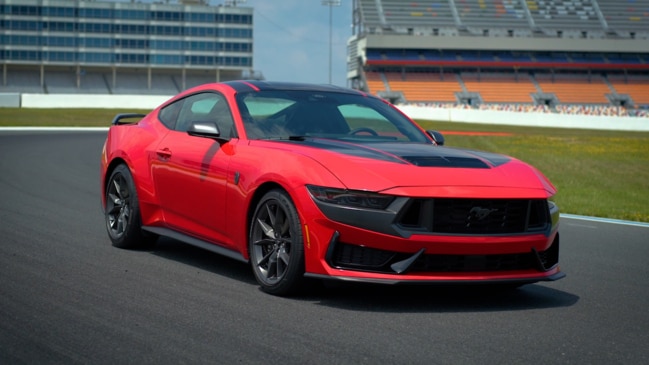
Motoring News
Don't miss out on the headlines from Motoring News. Followed categories will be added to My News.
Nascar is much more than a bunch of good ol’ boys who have mastered the art of turning left.
Like more than a few motorsport enthusiasts who live outside the US, my stock car racing perspective was largely informed by Days of Thunder, Talledega Nights and viral videos of spectacular crashes.
Shane van Gisbergen’s shock victory at the Nascar street race in Chicago piqued my curiosity just before Ford invited a handful of Australian motoring writers to test-drive next year’s Mustang on a Nascar track.
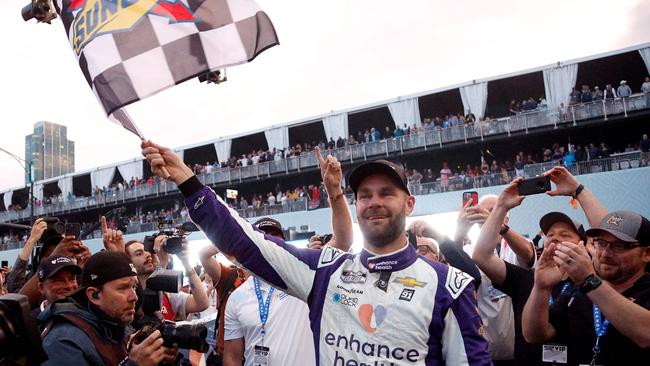
We also spent time in the Nascar hall of fame museum and the Team Penske headquarters, melted the tyres on the V8-powered Ford Mustang Dark Horse on the Charlotte Motor Speedway “roval” course and were embedded with Ford Performance when they took victory in the Cook Out 400 at Richmond Raceway.
Here’s what we learned in a crash course for the Nas-curious.
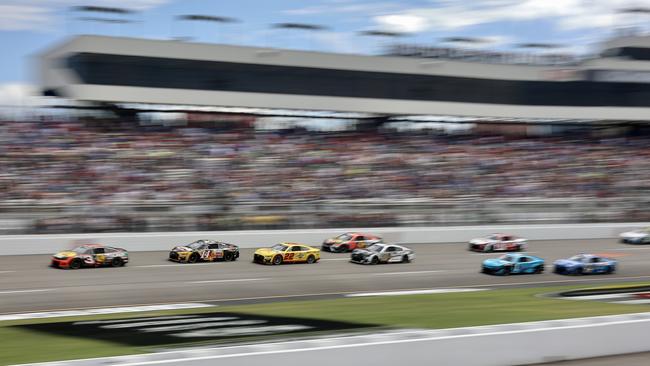
Talladega Nights got a lot right
Will Ferrell’s role as Ricky Bobby introduced stock car racing to a generation back in 2006.
They didn’t miss.
There are drivers named Ricky, Bubba and Rowdy on the grid in 2023. Everything they do, wear and say is sponsored and commercialised, for better or worse.
And Ricky Bobby’s life mantra, “If you ain’t first, you’re last”, is writ large in a sport where winning is everything.
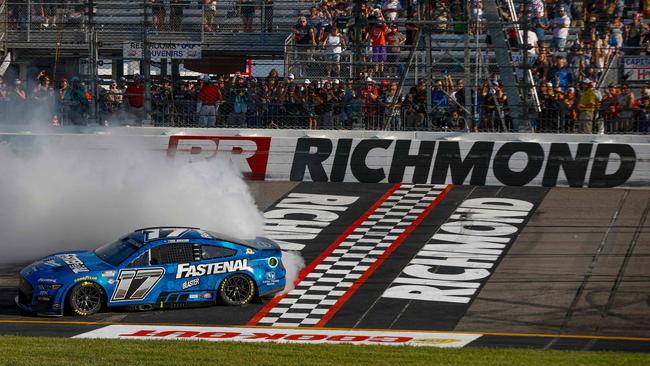
Finish first and you get the track to yourself for an indulgent burnout celebration before being feted with trophies, confetti and adoring fans in victory lane.
Drivers who finished second or third through to last make a hasty exit from the track.
There is only one place on the podium, and it’s reserved for the winner.
Victory in a Nascar race secures a spot in “the chase”, a finals series that crowns each year’s champion.
It’s difficult to qualify for the post-season contest without winning a race.
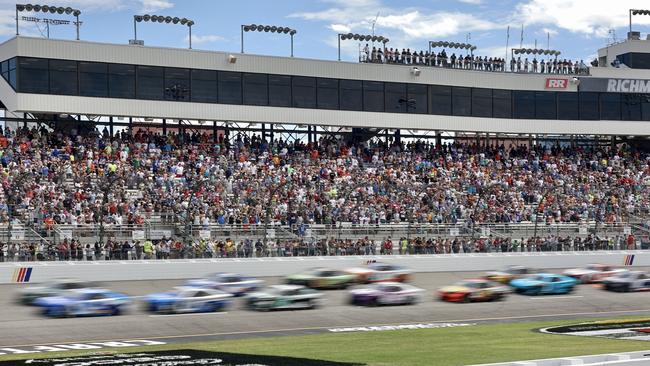
America appreciates pageantry
It shouldn’t come as a surprise to see that the home of super-sized fries takes a “bigger is better” approach to motorsport.
The Nascar hall of fame in Charlotte is a world class museum that takes in everything from the sport’s ties with illicit moonshine smuggling to its stratospheric rise in popularity through the Dale Earnhardt era to today.
Once trackside, one of the big differences between Supercars and Nascar is that there are no support races.
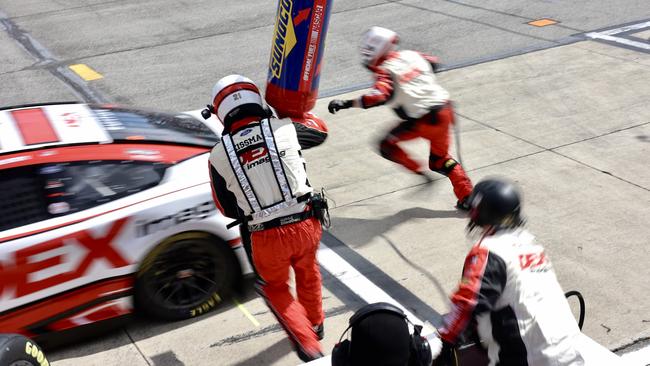
Everything to see is directly linked to the big show – you won’t watch millionaires in their Porsches or youngsters bombing around the track in Toyota 86s with half the power of V8s in the car park.
Drivers are introduced like boxers, individually, with their choice of pumping from the P.A.
There’s the Star Spangled Banner, the military flyover and a genuine effort to promote the hundreds of brands that make the sport possible.
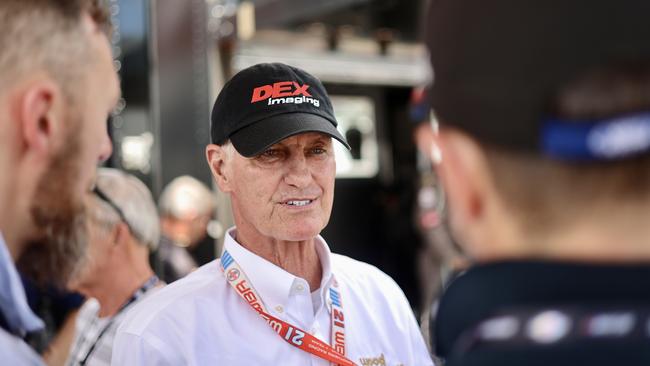
It’s a big business
Wood Brothers Racing co-owner Eddie Wood told us single car teams spend $US15-$20 million on a season of racing.
Prize money helps pay the bills. The Chicago street race won by van Gisbergen had a $US7.5 million purse, and gossip in the motorsport game suggests the driver’s share was about $1 million.
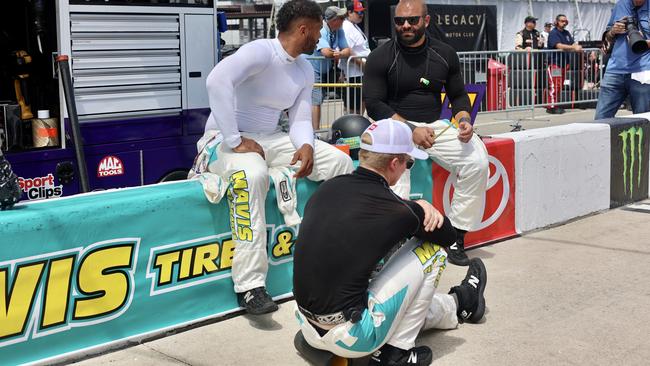
For the sake of his increasingly complex personal tax affairs, we will also speculate he pocketed just $1000 and 500 cases of Bud Light bottle shops can’t give away.
Speaking of political correctness, signs in the carpark ask spectators not to bring firearms or confederate flags into the venue.
And the vast majority of teams no longer pay promotional grid girls to attract attention.
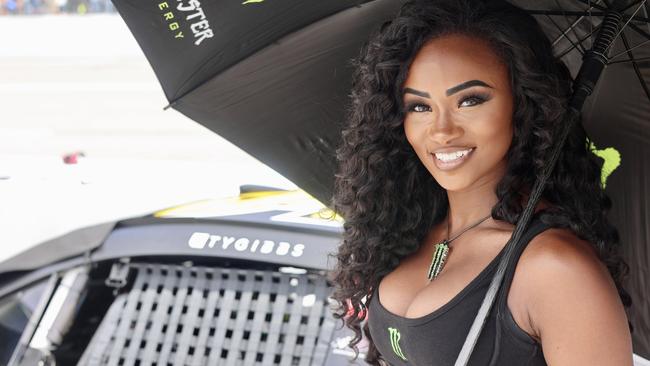
The lone exception was the number 54 Joe Gibbs Racing car usually sponsored by Monster energy drinks.
A temporary sponsor switch saw their umbrella girls pose with a car backed by the Christian “He Gets Us” campaign designed “to increase the respect and personal relevancy of Jesus”. Amen.
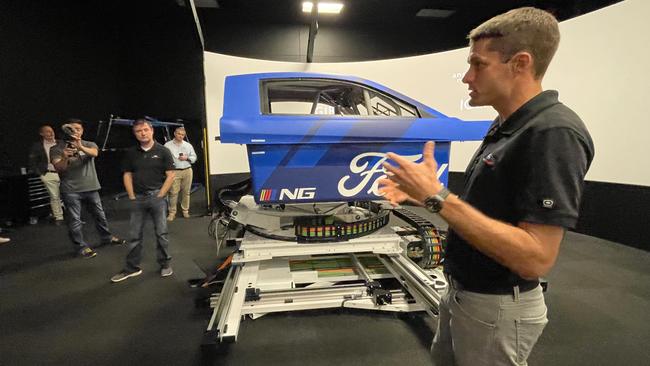
This is a hi-tech sport
Forget about carburettors and a simple dash with an oversized tacho – Nascar is an incredibly advanced sport.
Though the cars are relatively simple, teams go to extraordinary lengths to find an on-track advantage.
Ford showed us their “old” driver-in-the-loop simulator, a $4.5 million machine that drivers use to perfect their approach to the track. Their latest machine was off limits, with access closely guarded by racing insiders.
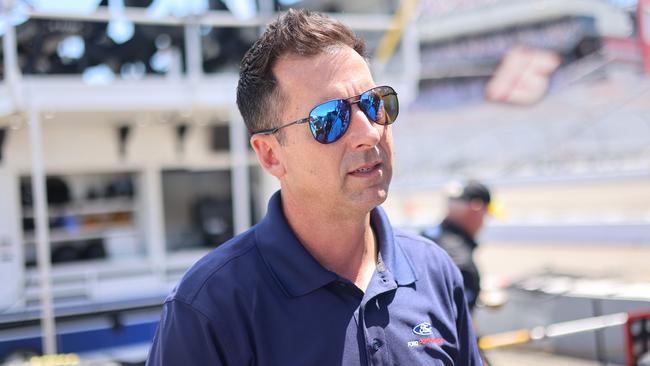
Ford Performance spokesman Matthew Todd said the manufacturer had been experimenting with artificial intelligence to interpret the suspension approaches of arch rivals Chevrolet and Toyota, and using sophisticated software to predict opposition race strategy.
Team Penske showed us how it uses lasers to ensure incredible precision when building its cars – and to make sure that grey areas are exploited to find an edge in performance.
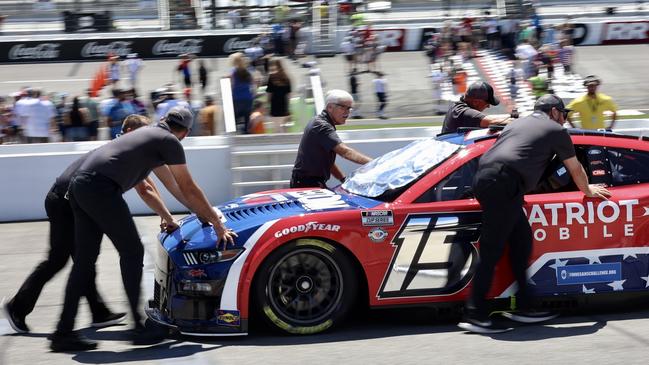
Stock car teams are famous for finding loopholes – or even breaking the rules – hoping to shore up strong results before rivals and officials understand what’s going on.
In-car video busted Hendrick Motorsports crew chief Chad Knaus telling champion driver Jimmie Johnson to hide illegal modifications in 2011.
“If we win this race, you have to crack the back of the car,” Knaus told the driver.
“Got it? You don’t have to have to hit it hard, you don’t have to destroy it. But you’ve gotta do a doughnut and you’ve gotta hit the back end, or somebody’s gotta hit you in the ass-end or something. OK?”
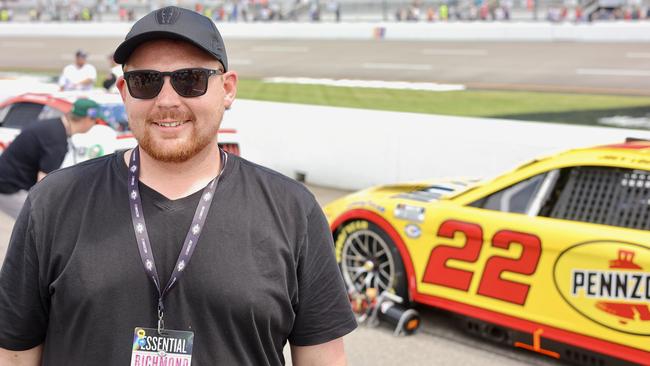
These guys can drive
Don’t be fooled by the seemingly effortless nature of van Gisbergen’s debut win – Nascar racing is hard.
The circumstances surrounding his victory played to his strengths as Nascar drivers have minimal race experience in wet conditions, the latest Nascar machines have a lot in common with Supercars and the Chicago venue was the sport’s first attempt at a street course.
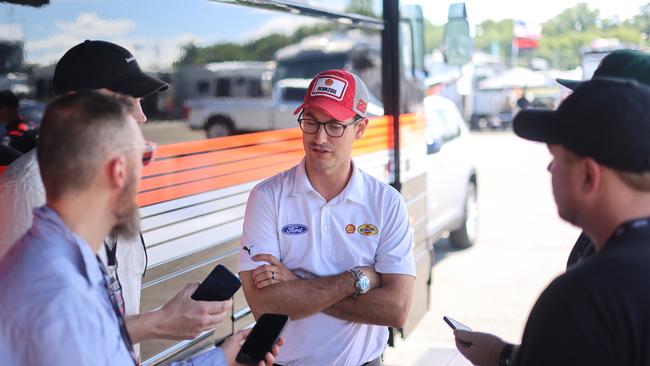
Joey Logano, 2022 champion for Team Penske, said ovals might look easy but are quite complex.
“You can look at it and look at basketball and say ‘I just put the ball in the hoop, right?’ until you see how good LeBron is, and you go ‘apparently someone can be better at this than others’,” Logano said.
“People have their expertise. As a race car driver you can be really good at one piece of it.
“Seeing what Shane did when he came over, he was really good at street courses because they do it a lot and it was our first time.
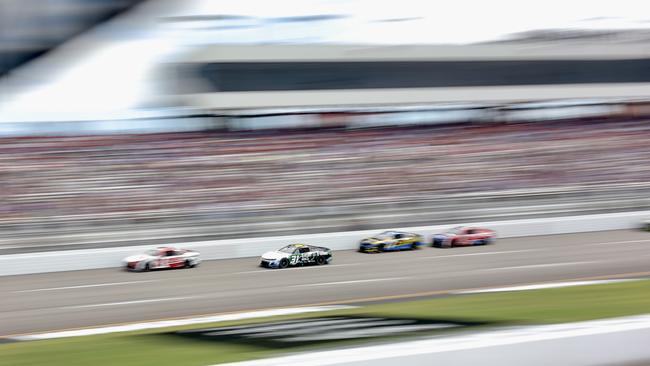
“He came over and schooled us all. That was his thing.
For us, we grew up doing [ovals] … where we are really strong.
“If we all go up to Chicago we are going to do a lot better than last time.”
Originally published as Why Aussies are wrong about Nascar


